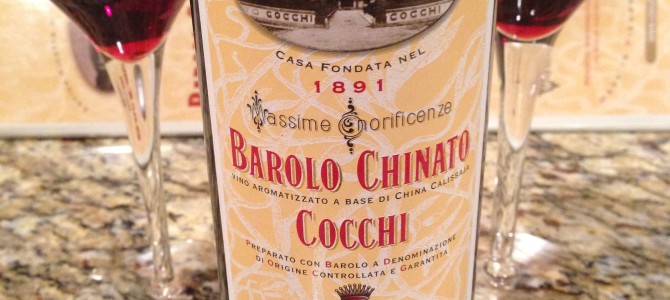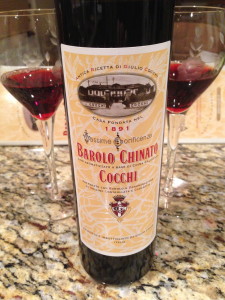I always say, “My last job is the reason I drink, now I drink for a living.” While it’s a tongue-in-cheek statement, it’s not far from the truth. My days were rarely under 10 hours and sometimes there was nothing better than to come home, pour a glass, put on some music and start cooking. The jive was checked at the door and melted away with each sip.
These days I spend more time studying wine, and I must say there’s a never-ending “must drink” list forming in the backs of my notebooks. In addition to the drinking assignments for various study programs – best homework E.V.E.R. – there is the curiosity that comes with answering questions about wines you rarely or never see on the shelves.
Last night my curiosity led me into a wine shop I hadn’t visited before. As I wandered through the store “just looking” (famous last words) I started picking up bottles that looked interesting or from appellations I’d only read about or answered test questions on. This bottle is one of them:
Barolo is a great wine of the Piemonte region of Northern Italy made with 100% Nebbiolo grapes and aged for a minimum of three years between wood and bottle. Chinato – pronounced (key-NAH-toe) comes from the words China Calissaya, otherwise known as quinine bark. You’ll know quinine from really good tonic water. Barolo Chinato would then translate roughly to Quinined Barolo.
It was created in the 19th century by a pharmacist and named Guiseppe Cappellano who wanted to create an herbal concoction to cure various ailments such as the cold and flu. It was originally served warm like mulled wine or vin brulee, as it’s called in Italy.
While this isn’t a fortified wine, it does start with a grain spirit base to which herbs, spices, roots (like rhubarb), grand wormwood and the quinine bark are added, which makes it a liqueur or cordial. Each producer has their own formula for flavoring and uses anything from orange peels to cinnamon, cloves, anise or cardamom. These ingredients are steeped together to make a liqueur which is then added to Barolo (the actual – mature, meets all DOCG production and aging requirements – wine) and aged in small barrels for a year or so.
Of course we were so curious about this bottle we immediately opened it and broke out some dark chocolates. This is definitely a meditation wine. It is all at once bitter, sweet, slightly medicinal and pungent with spice, dried fruits and cherry flavors. It was so intriguing and I could not help but slide into the warmth and complexity of all that was going on in this glass. I’m sure if I was actually stressed about anything (other than passing blind tasting exams) this would surely melt everything away.
The way I see it, this is a bottle I’ll keep on hand for not only those days where the jive needs to be checked at the door, but as a special sipper for in front of the fire place … usually while my nose is in the books most likely reading about that next “must drink” bottle. And if it cures my next cold or flu? Then all the better.
(Originally Published 2014/12/14)


